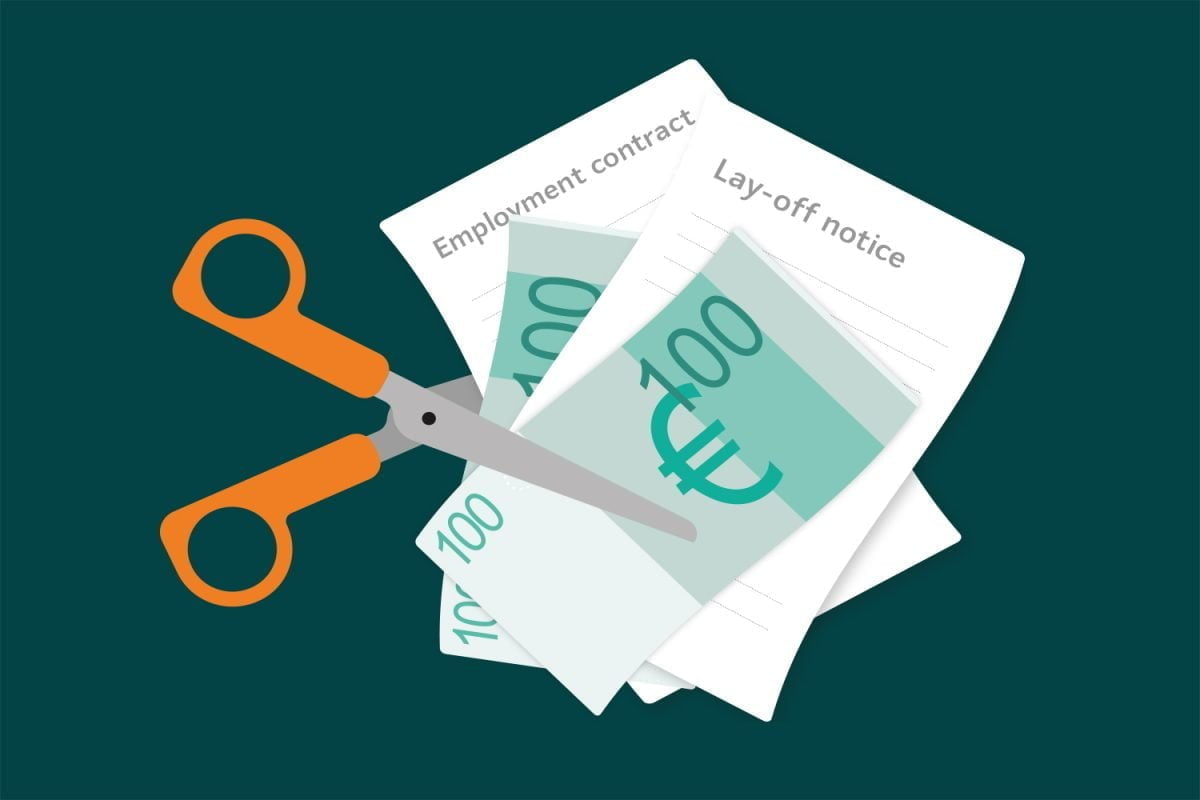Cuts for all
The Orpo-Purra Government’s drastic cuts in Finnish unemployment security endanger the existing system of temporary lay-offs. In international comparison, this system is seen as something positive and working well.
The employer can lay off an employee temporarily, based on the rules stipulated in the Finnish law, either for a fixed-term period or until further notice. This can happen by reducing working hours or interrupting the work completely.
Even when payment of wage or salary is stopped, the employment relationship remains in effect in other respects. For the loss in pay, an employee can get earnings-related allowance for the period of the lay-off. For Industrial Union members, this is paid by the A-kassa unemployment fund.
This system is a combination of flexibility for companies in difficult times and security for employees. For workers, it also gives the possibility to return to the job of their own competence.
This system is a combination of flexibility for companies in difficult times and security for employees.
Now, due to the right-wing government cuts in employment security, the system is being tested. With the new smaller unemployment benefits, employees might choose to move to another job during the temporary lay-off time. Even some employers have been worried that competent employees could leave.
At the same time, the government makes it more difficult for employees to adapt to the changes. Before reducing the workforce, a company with at least 20 employees is obligated to hold cooperation negotiations, under Finnish law. The negotiations could take from two to six weeks and the temporary lay-offs must be announced at least two weeks in advance.
This will change, too, with the new Orpo-Purra Government policy. In future, the length of time for cooperation negotiations will be halved. Also, these negotiations will only apply to much bigger companies i.e. those employing at least 50 employees. The notice period for temporary lay-offs will be cut in half, to seven days.
All this leaves significantly less time for employees to be prepared and organise their life during possible lay-offs.
This will happen
The Orpo-Purra Government is introducing deep cuts to earnings-related unemployment security.
It will cut the earnings-related unemployment allowance, make it more difficult to get it and freeze the index increases. The changes will concern the unemployed, those temporarily laid-off and part-time workers.
Some of the cuts are already in place. From the beginning of this year, the waiting period for unemployment benefits has been raised from five to seven days.
In April, child supplements in unemployment benefits will be abolished. The practice, whereby the unemployed can earn 300 euro a month without cuts in his/her allowance, will be terminated.
In Autumn, the earnings-related unemployment benefit will be cut by 20 per cent after two months of unemployment. After eight months, it will be cut by an additional five per cent.
All of these cuts will hit those temporarily laid off, too.
Tekijä Magazine asked A-kassa unemployment fund to find out the average length of the Industrial Union members’ temporary lay-offs. Based on an approximate sample, this is on average 18 days, including weekends. The median time is 12 days. The median is the middle value in a set of data from smallest to largest.




